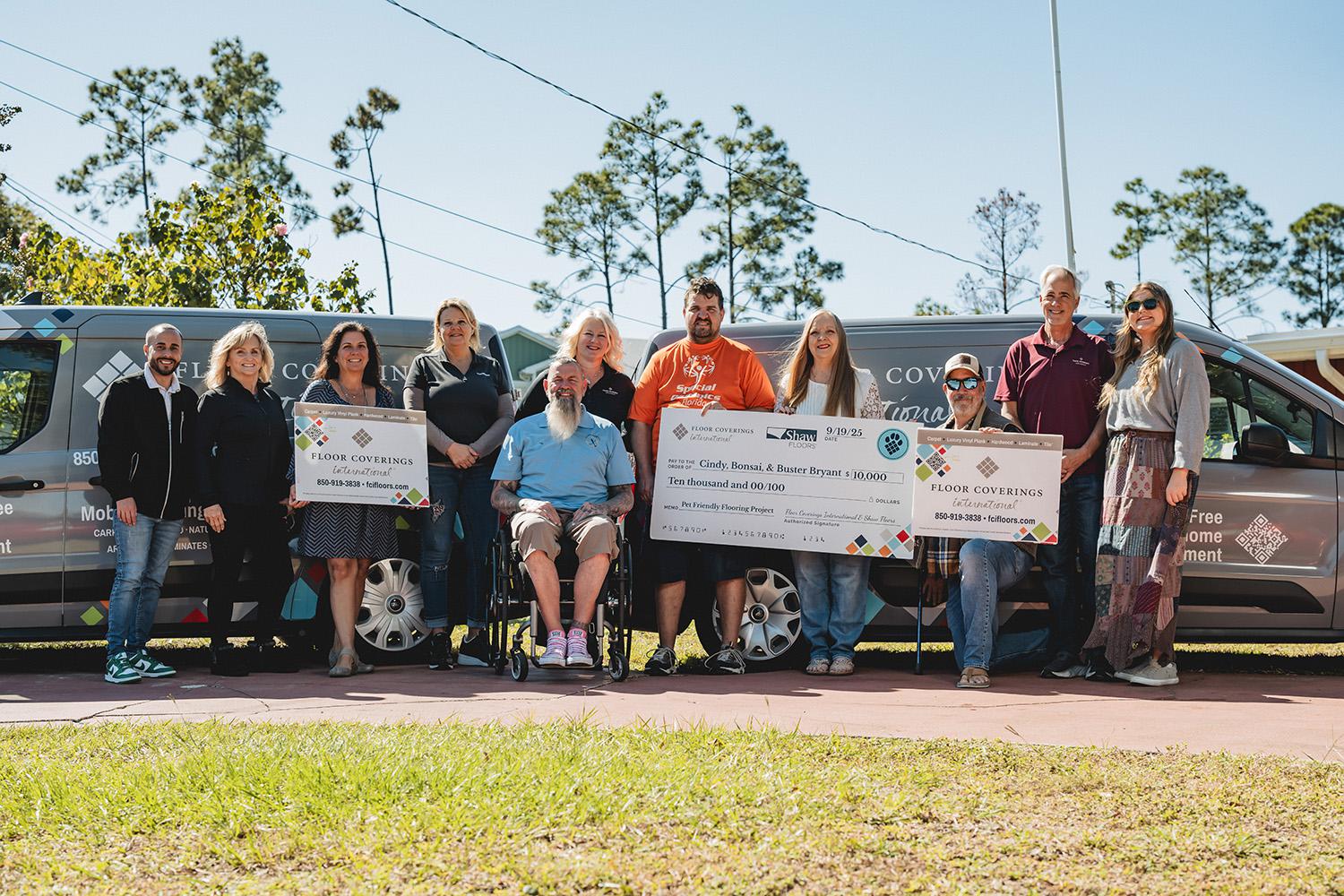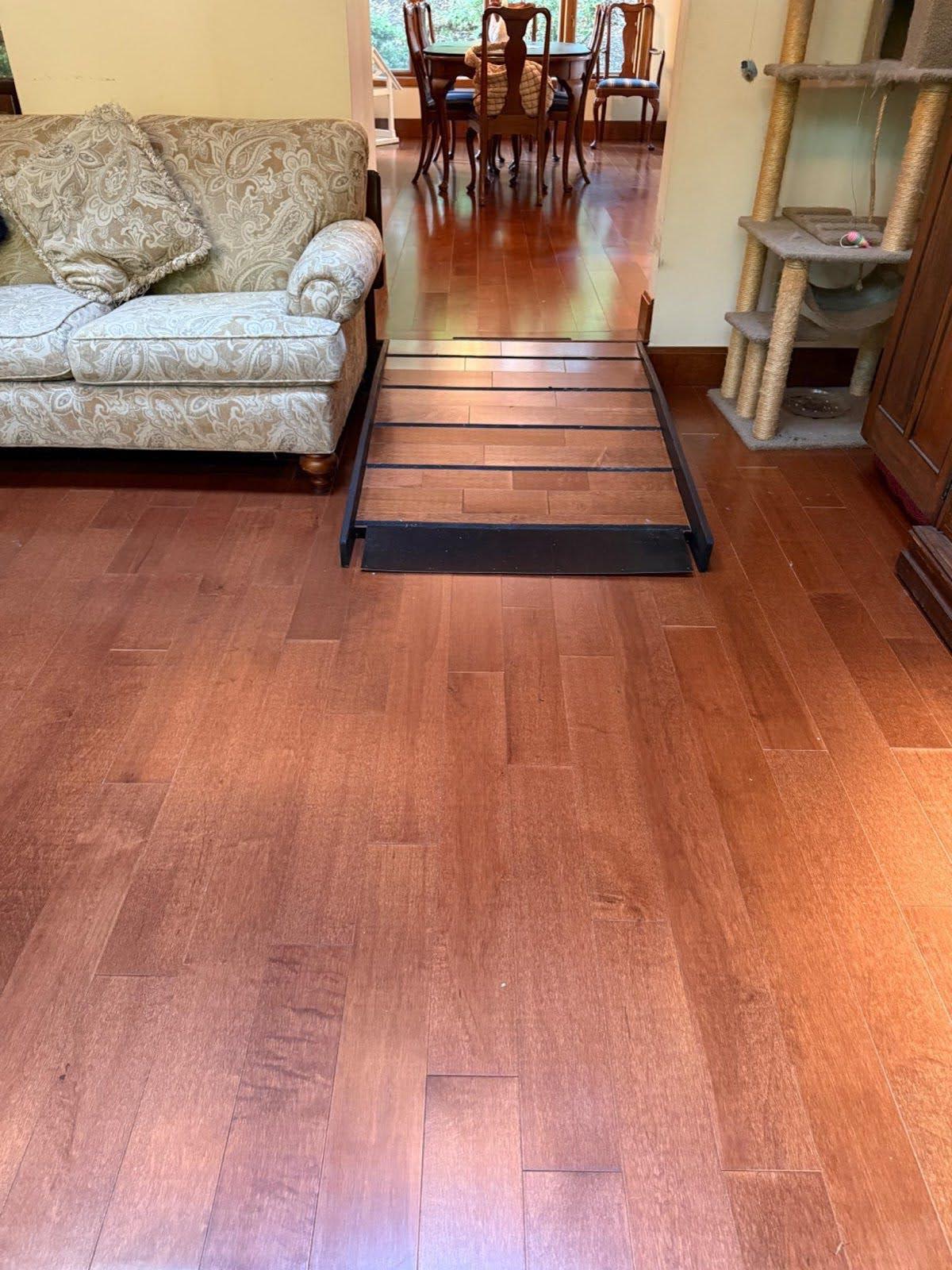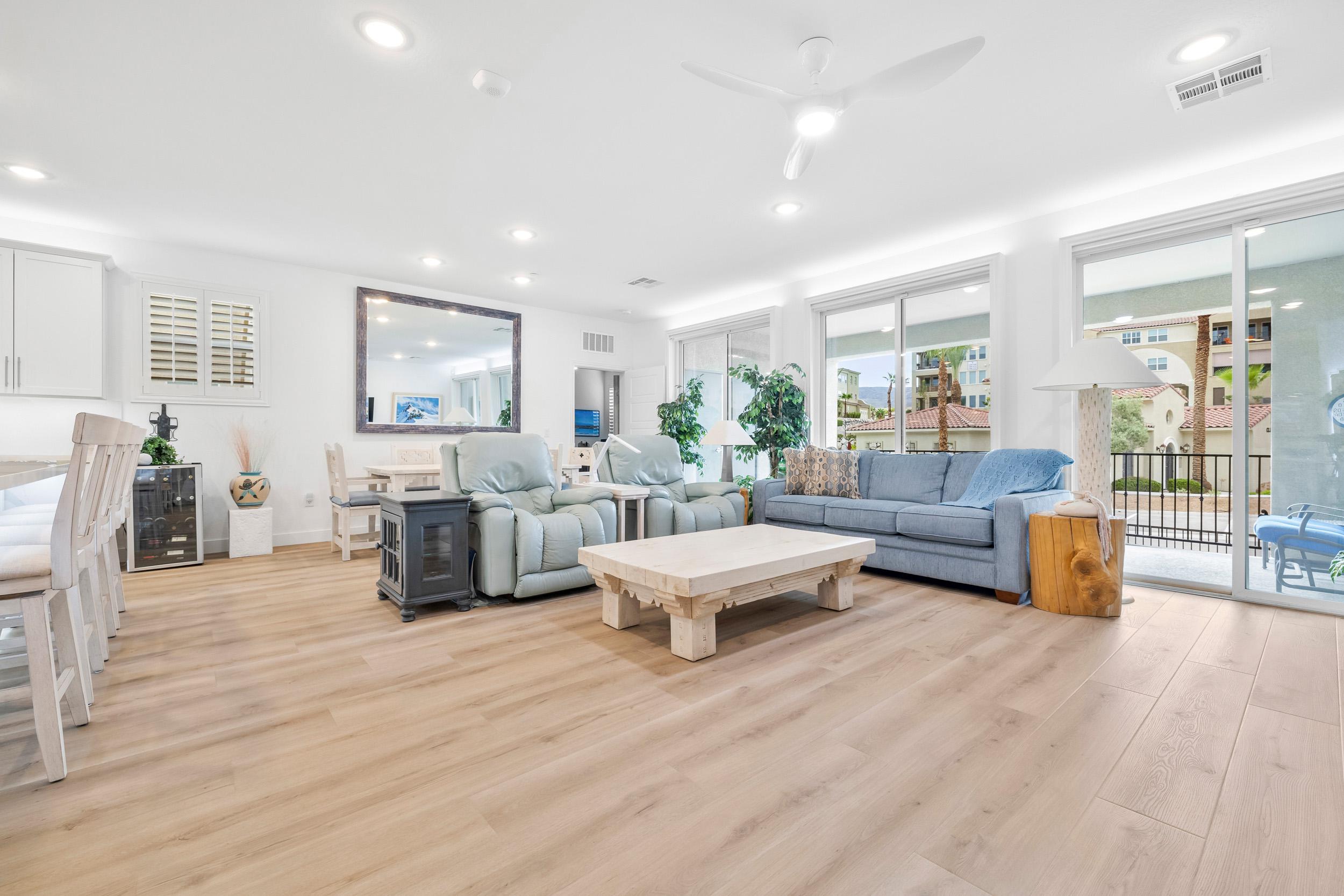The intense desert sun can cause even high-quality, fade-resistant flooring to dull and wash out over time. Hardwood flooring can be especially vulnerable to the Arizona sun, prompting some owners to search for alternatives. If you’re set on hardwood floors, here’s what to know – and what to do – about faded hardwood floors.
Do Hardwood Floors Fade in Sunlight?
Most hardwood floors will fade to lighter colors or shades when exposed to direct sunlight over time. A few hours of sunlight each day will eventually cause solid wood floors to change color, though some species and finishes may be more resilient than others or be harder to spot.
Fading is a natural process that occurs on all types of wood, in nature and in your living room.
- UV Light: Ultraviolet radiation breaks down chemical bonds in wood, with significant changes to the wood’s pigment. Visible light has less of an impact than UV light, but it will also change the look of wood flooring.
- Heat: Infrared light, expressed as heat, accelerates chemical changes and decomposition. At the same time, heat can dry out wood flooring, which often makes it more susceptible to fading, warping, and contracting.
How Different Wood Species Fade
Each species reacts to sunlight differently, and the long-term effects vary by grain pattern, stain or finish, and factors like average indoor humidity levels.
In most cases, however:
- Oak, maple, ash, and hickory will “bleach” or lighten with consistent sun exposure.
- Jatoba, American cherry, and walnut will darken in direct sunlight over time. Many homeowners like this effect, calling it a “patina”.
Read More: Installing Wood Flooring Over Concrete
How to Fix Sun-faded Hardwood Floors
In most cases, homeowners will need to sand and completely refinish the entire floor to fix sun damage. Fortunately, most solid wood floors can be refinished several times, so you’ll be able to take preventative measures in the future to avoid having to refinish your floors again for a decade or two. Engineered wood floors, which have a real wood veneer, are equally susceptible to sunlight damage, but can only be refinished once or twice – if at all.
Tips to Prevent Faded Hardwood Floors
Get ahead of UV damage with a little creativity and planning.
- Use window treatments. Add blinds, shades, or curtains to south and west-facing windows, or any that let in sunlight. Keep windows covered during peak daylight hours. Consider adding UV-blocking film if you can’t live without the windows uncovered to let in that glorious desert sun!
- Get gardening. Plant shade trees or shrubs to reduce direct sunlight for portions of the day.
- Choose wisely. Look for UV-resistant wood floor finishes that include UV inhibitors. Water-based polyurethane finishes provide superior UV protection compared to oil-based alternatives.
- Keep humidity in check. Keep your home’s indoor relative humidity between 35% and 55% to prevent discoloration, warping, and buckling.
If sun damage has you worried, consider fade-resistant flooring like porcelain tile, natural stone, and vinyl flooring options with a UV-resistant coating.
Discover the Perfect Flooring for Your Home, At Home
Floor Coverings International® of Chandler-Gilbert offers the area’s most convenient floor shopping experience. Find the right flooring for your home without ever leaving home with our Mobile Flooring Showroom®. With over 3,000 options onboard and paired with expert recommendations from our local team, it’s the stress-free way to elevate your space. Start your project by scheduling a free, in-home consultation!



